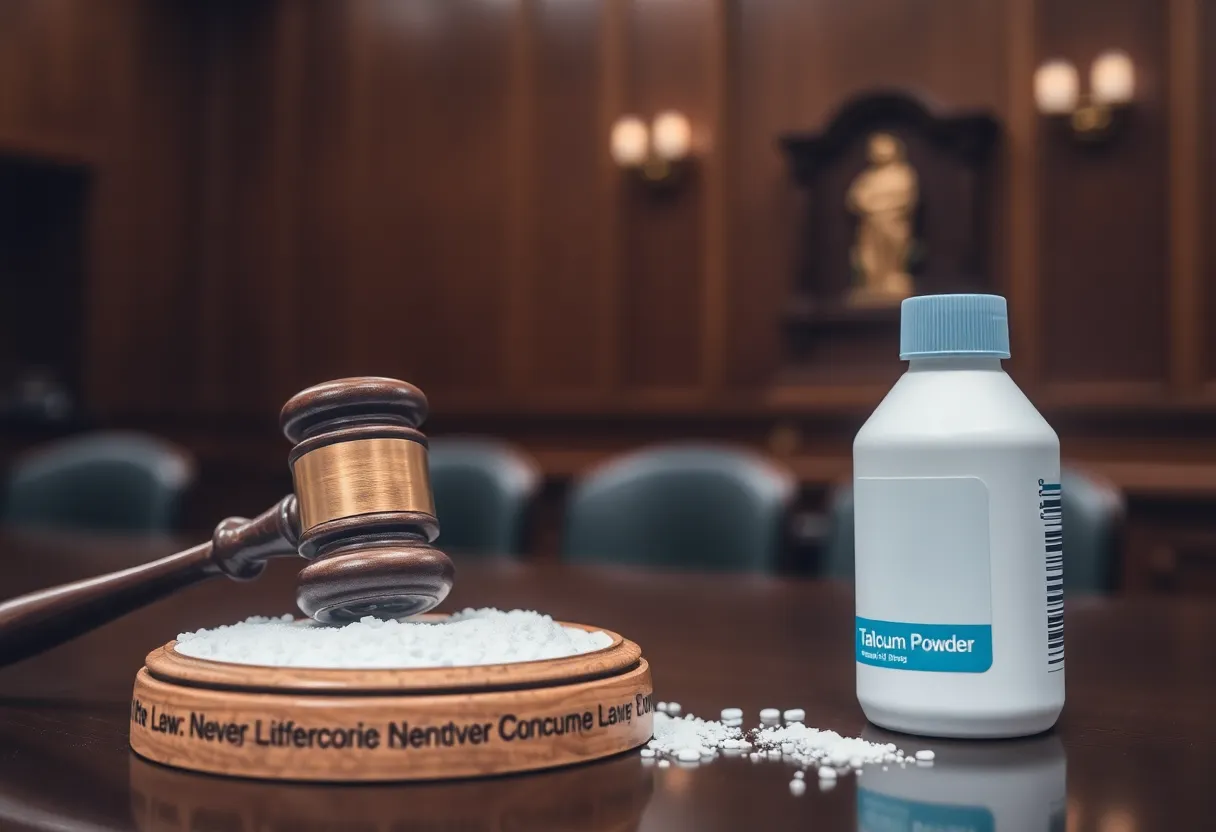NORTH YARMOUTH, Maine: A Heartbreaking Legal Battle Over Talcum Powder
In a story that has gripped the attention of many, a man from North Yarmouth, Maine, is stepping into the legal arena with an eye-popping lawsuit against one of the most recognizable names in consumer products: Johnson & Johnson. Andrew Curtin has accused the company of causing the death of his wife, Cynthia, due to the use of their talcum powder. This lawsuit amounts to a staggering $25 million in damages, making it a significant case in the ongoing debate over the safety of talcum powder.
A Sudden Tragedy
Cynthia’s life took a tragic turn when she was diagnosed with mesothelioma in 2017. The diagnosis felt like a gut punch to her family. Just four days later, Cynthia passed away, leaving behind a heartbroken husband and an irreplaceable void in their lives. It’s a heartbreaking loss, and Andrew’s decision to file a lawsuit speaks volumes about the emotional turmoil that followed her sudden illness.
Claims Against Johnson & Johnson
In his lawsuit, Andrew claims that the talcum powder contained asbestos, a material well-known for its link to serious health issues, including mesothelioma. This lawsuit is not an isolated case; it’s part of a larger trend where former users of talcum powder are coming forward with health claims. Johnson & Johnson is facing a mountain of legal challenges related to their talcum powder products, including more than 60,000 patients who filed a class-action lawsuit alleging that these products contributed to their ovarian cancer.
Recent Developments in Talcum Powder Lawsuits
The stakes have never been higher for Johnson & Johnson. Just last October, a man from Connecticut won a jaw-dropping $15 million judgment against the company after claiming that their talcum powder caused his cancer. To add to the turmoil, a colossal settlement of $8.2 billion is reportedly in the works for thousands of plaintiffs who feel they have suffered health complications from using the product.
Johnson & Johnson’s Response
As the lawsuits mount, Johnson & Johnson has not shied away from making their case. They have pointed fingers at the FDA for not requiring cautionary labels on their talcum powder. The company maintains that they have acted responsibly and that their products are safe for consumer use. However, the wave of lawsuits suggests that many consumers feel differently, bringing a critical eye to the entire industry.
The Bigger Picture
This legal fight highlights an ongoing conversation about consumer safety and corporate responsibility. The potential link between talcum powder and serious health risks has sparked debates about transparency in labeling and accountability among manufacturers. For the families affected, like the Curtins, these discussions are not merely theoretical; they represent real lives impacted by devastating illnesses.
What’s Next?
A lot is riding on the outcome of this lawsuit, not just for Andrew Curtin but for the thousands of others who have taken a stand against Johnson & Johnson. As this story unfolds, it will be interesting to see how the legal landscape changes and whether it leads to any shifts in consumer safety regulations. In a world where consumers often place their trust in well-known brands, this situation serves as a reminder of the importance of awareness and advocacy for public health.
A Call for Awareness
The story of Cynthia and Andrew Curtin is a sobering reminder that issues related to health and safety can hit close to home. It’s crucial for consumers to be informed about the potential risks associated with everyday products. As the legal proceedings begin, all eyes will be on this case, hoping for justice and perhaps a turn toward better safety practices in the consumer goods industry.



















